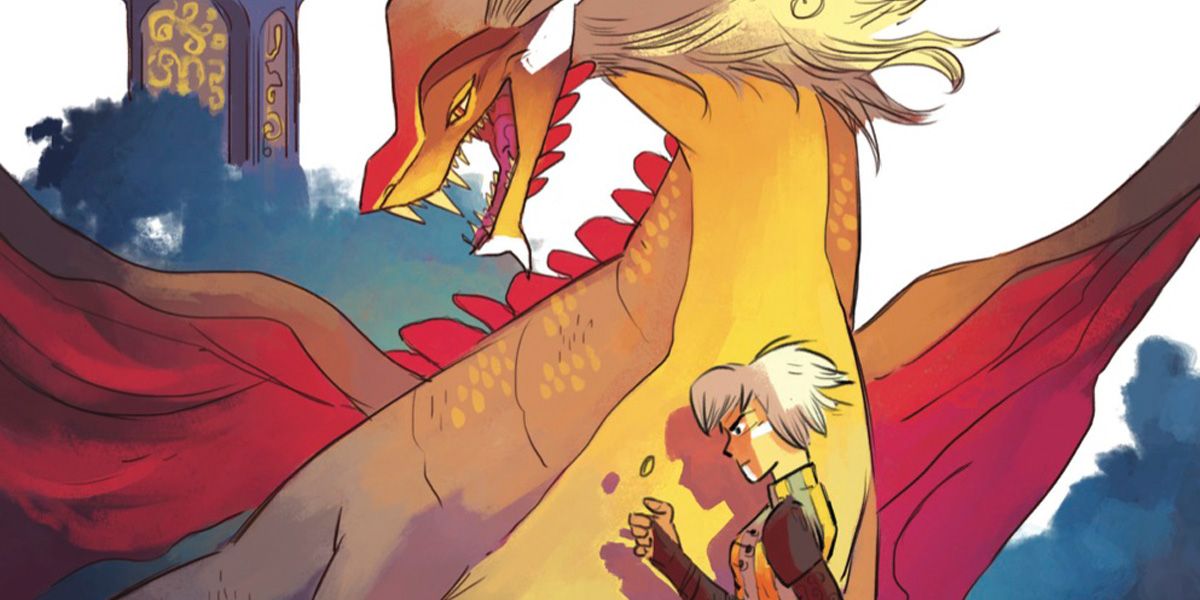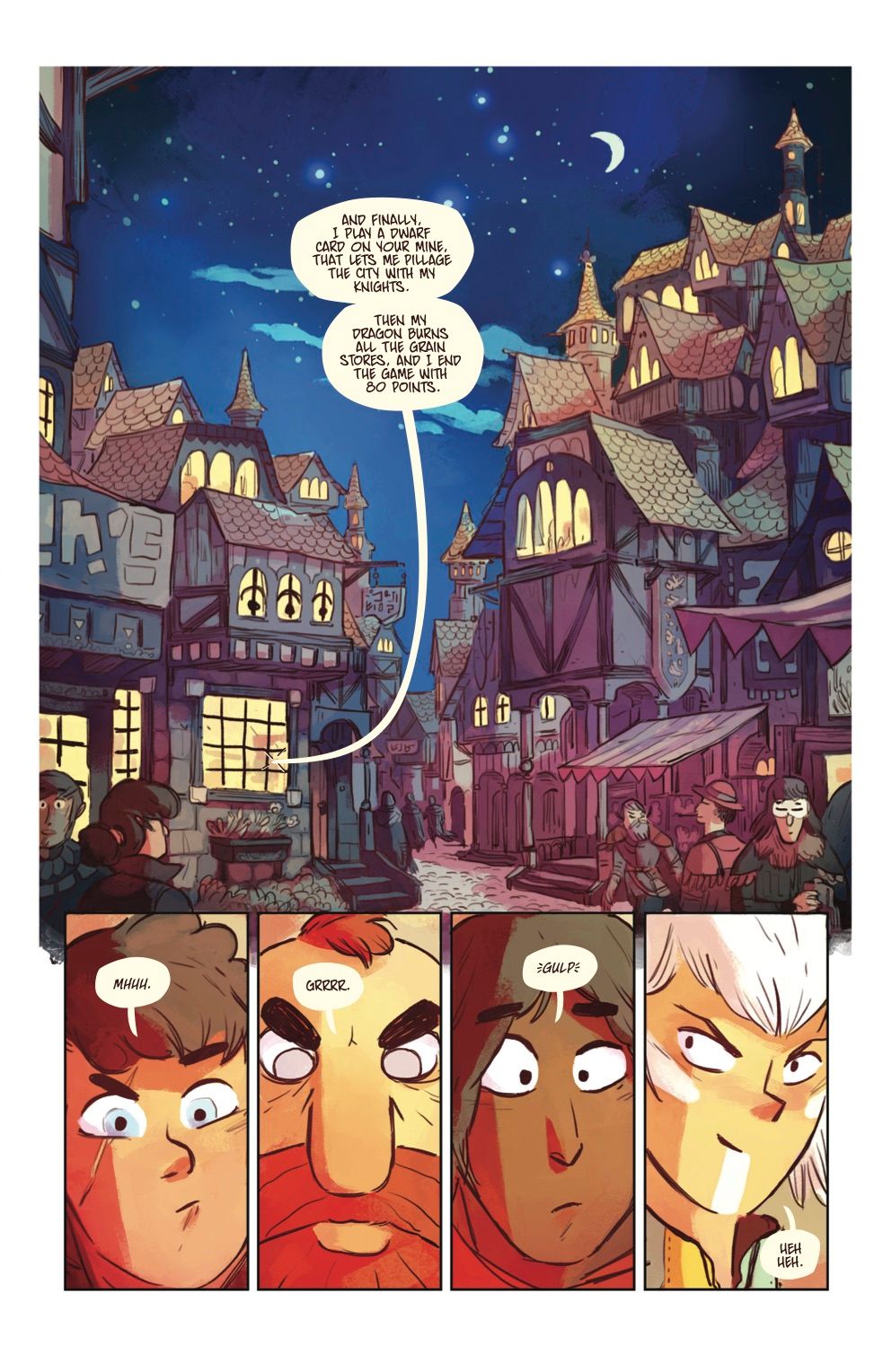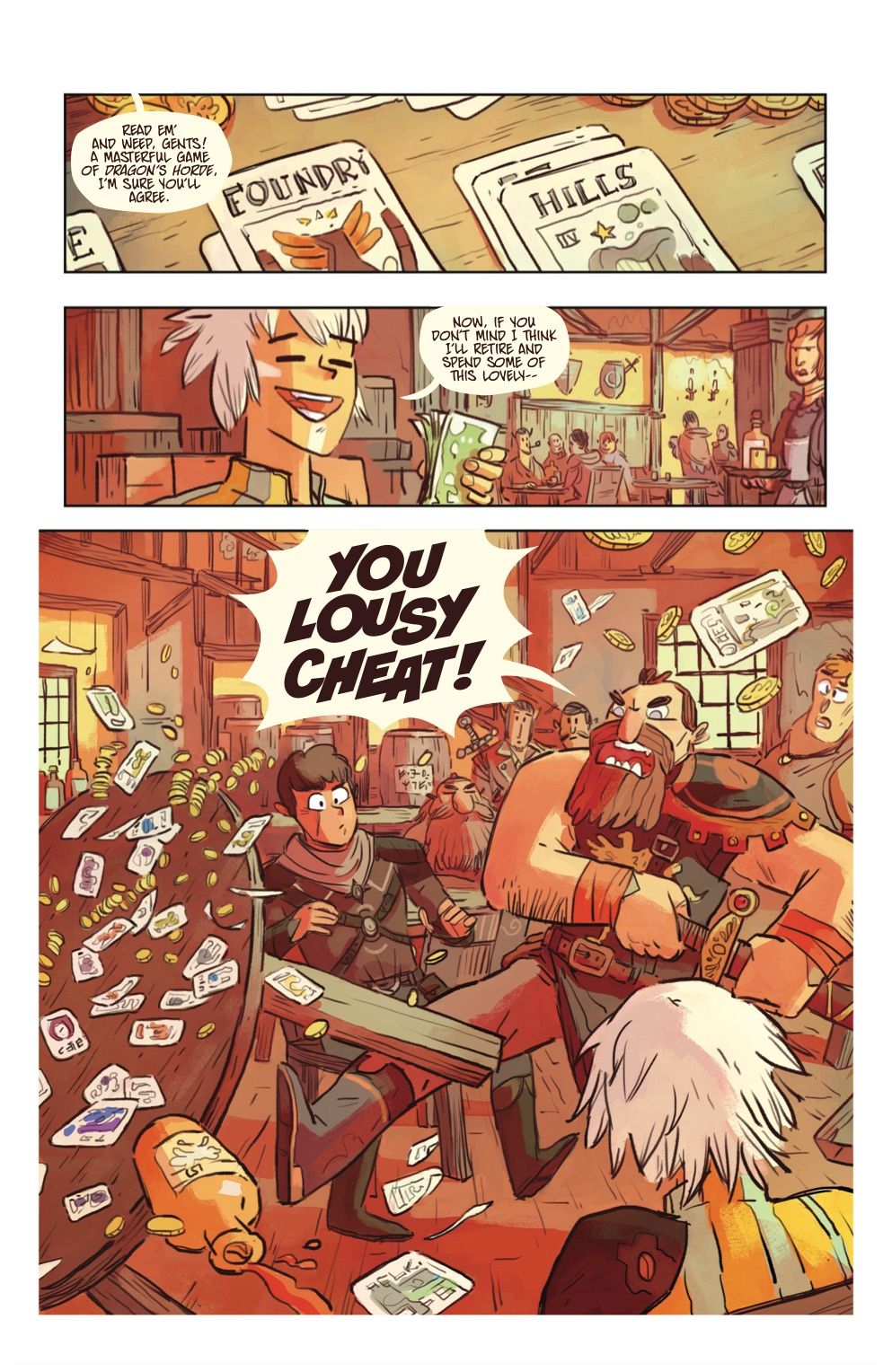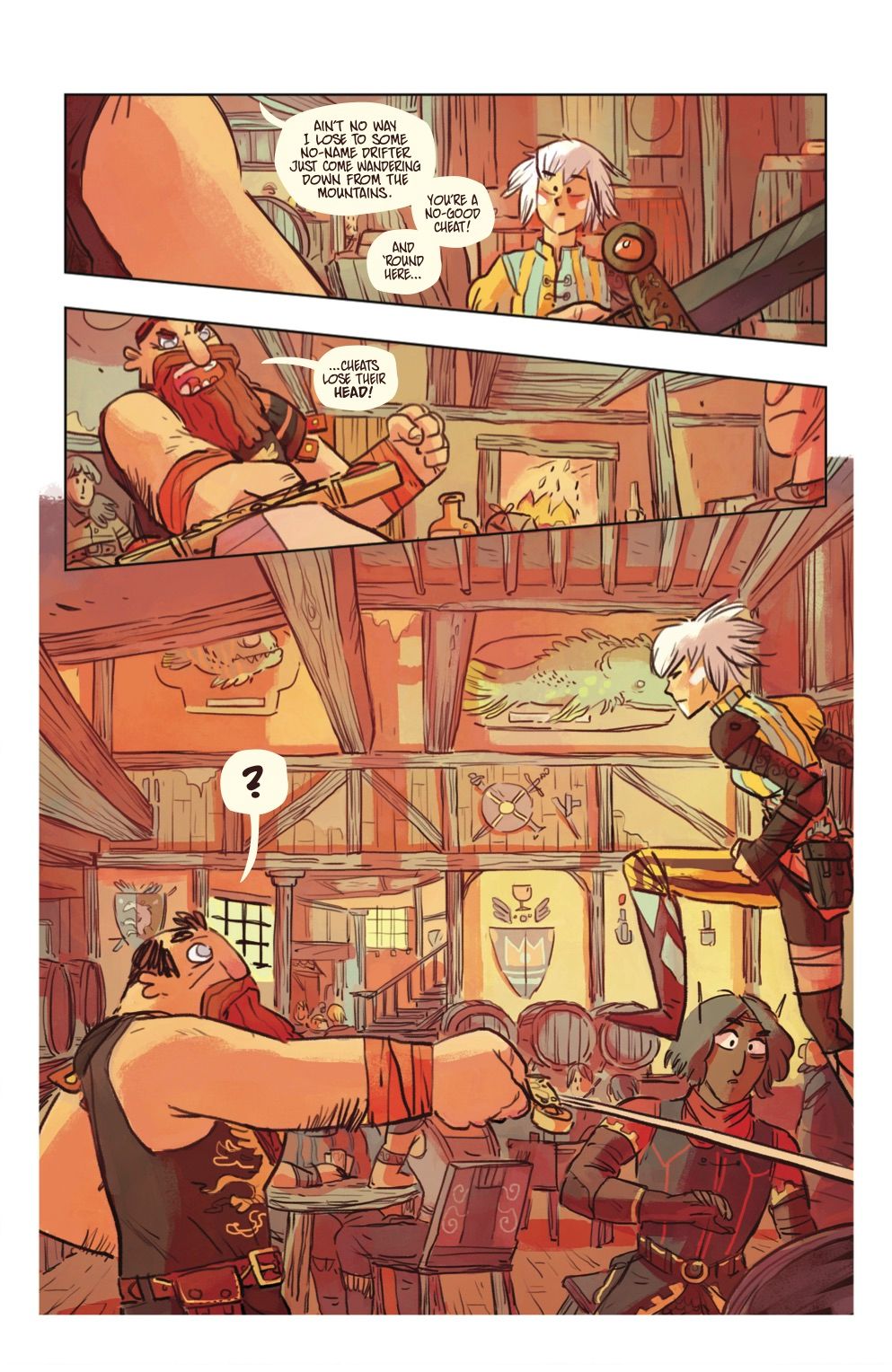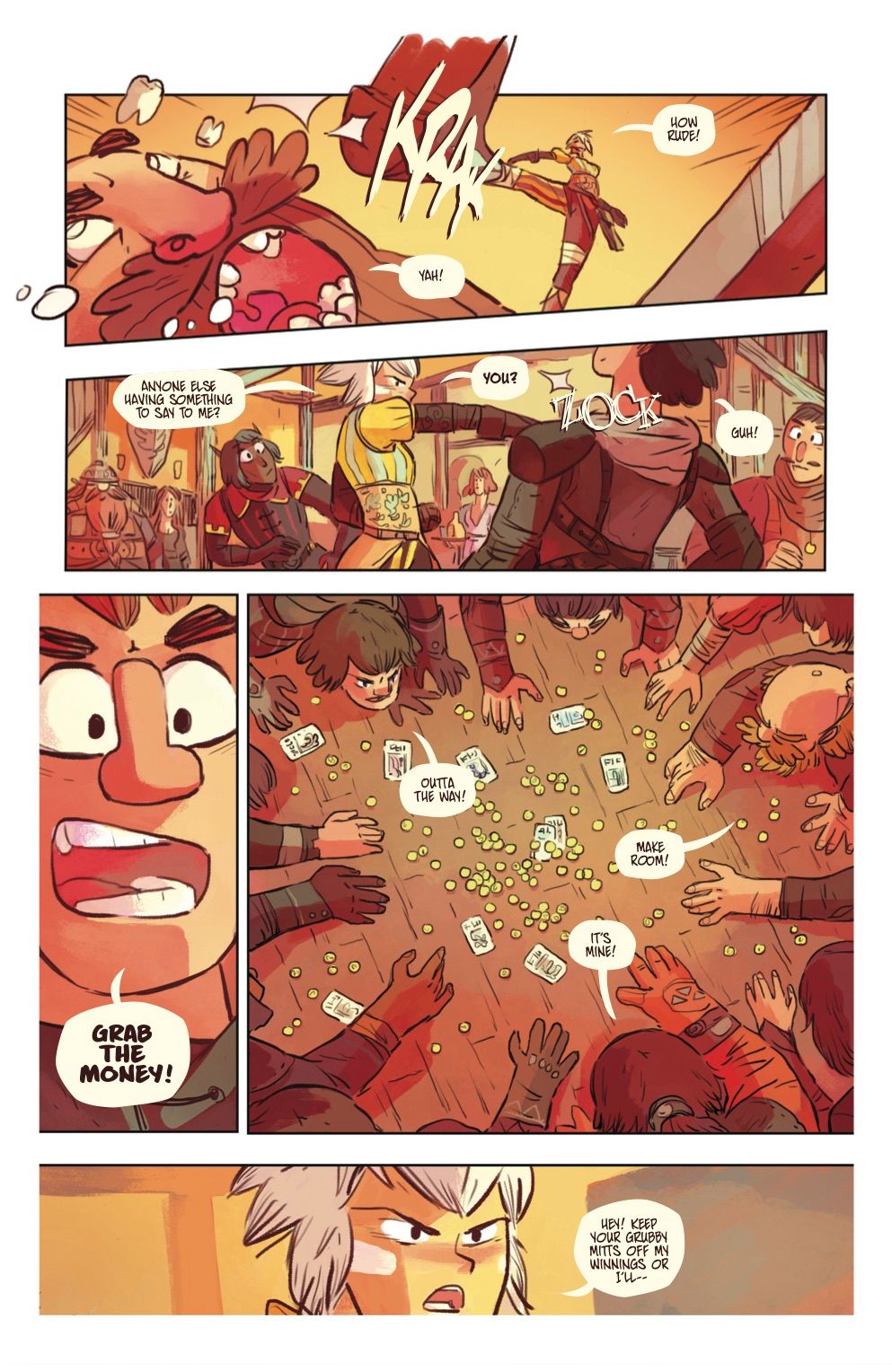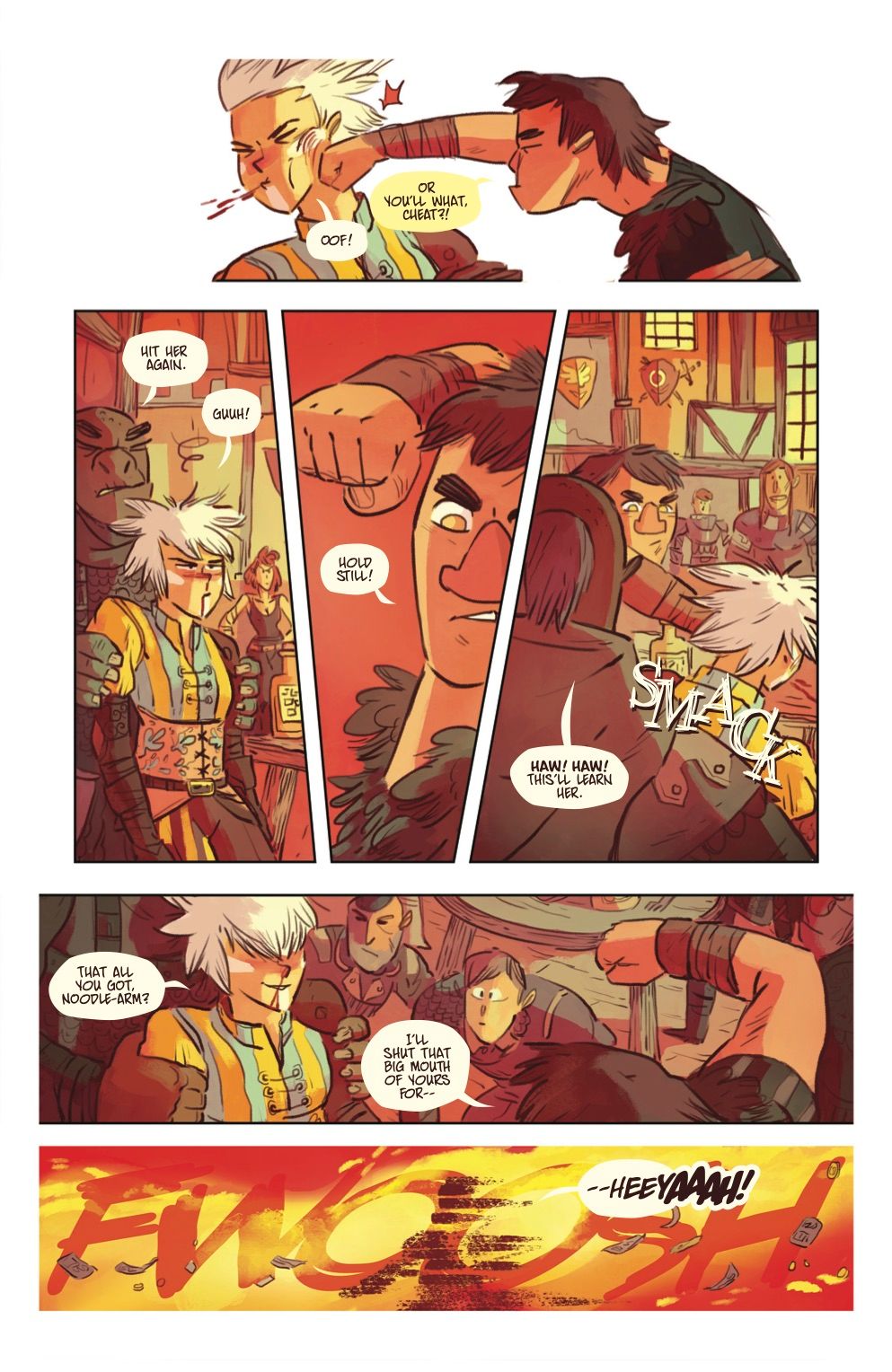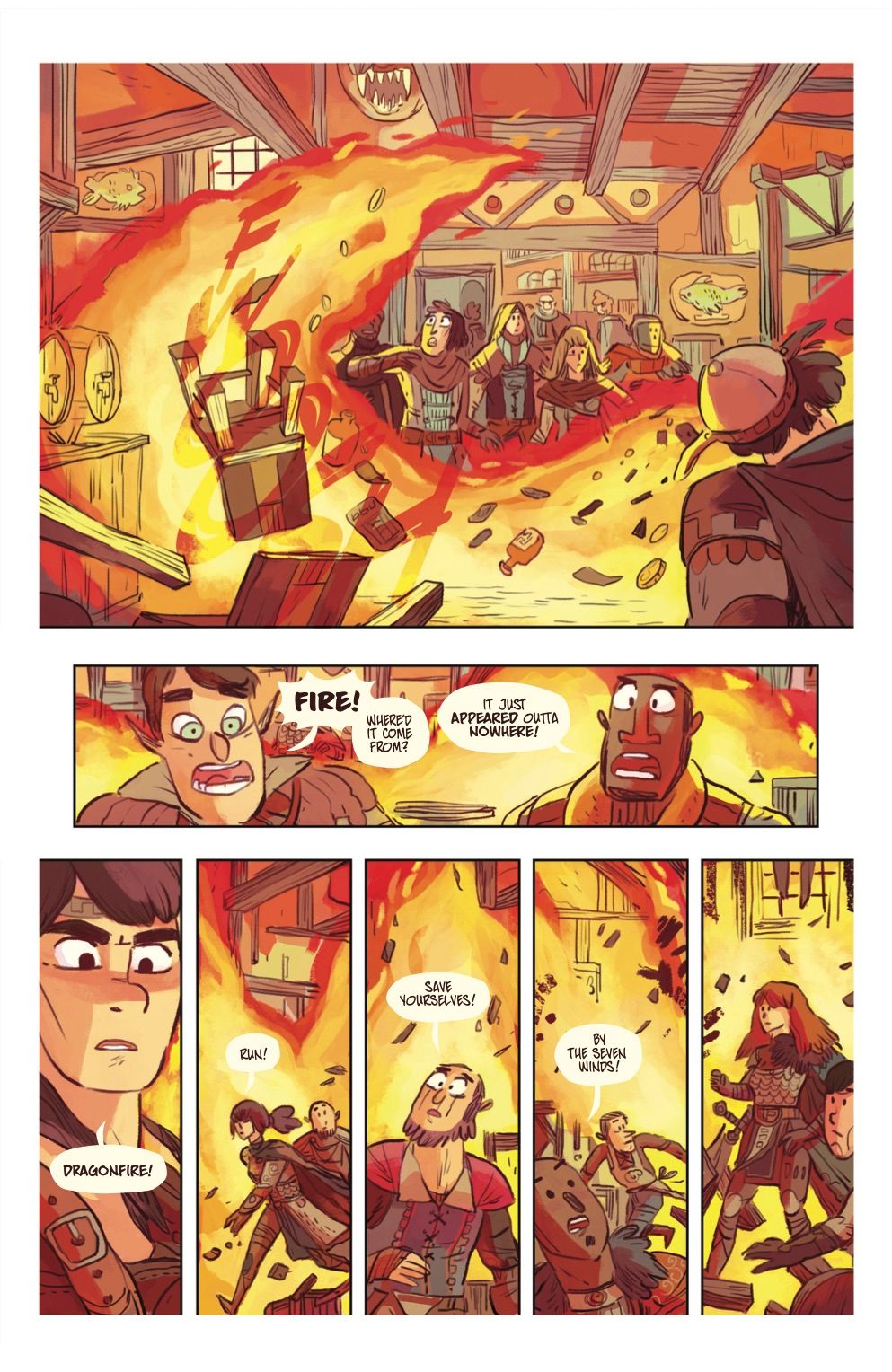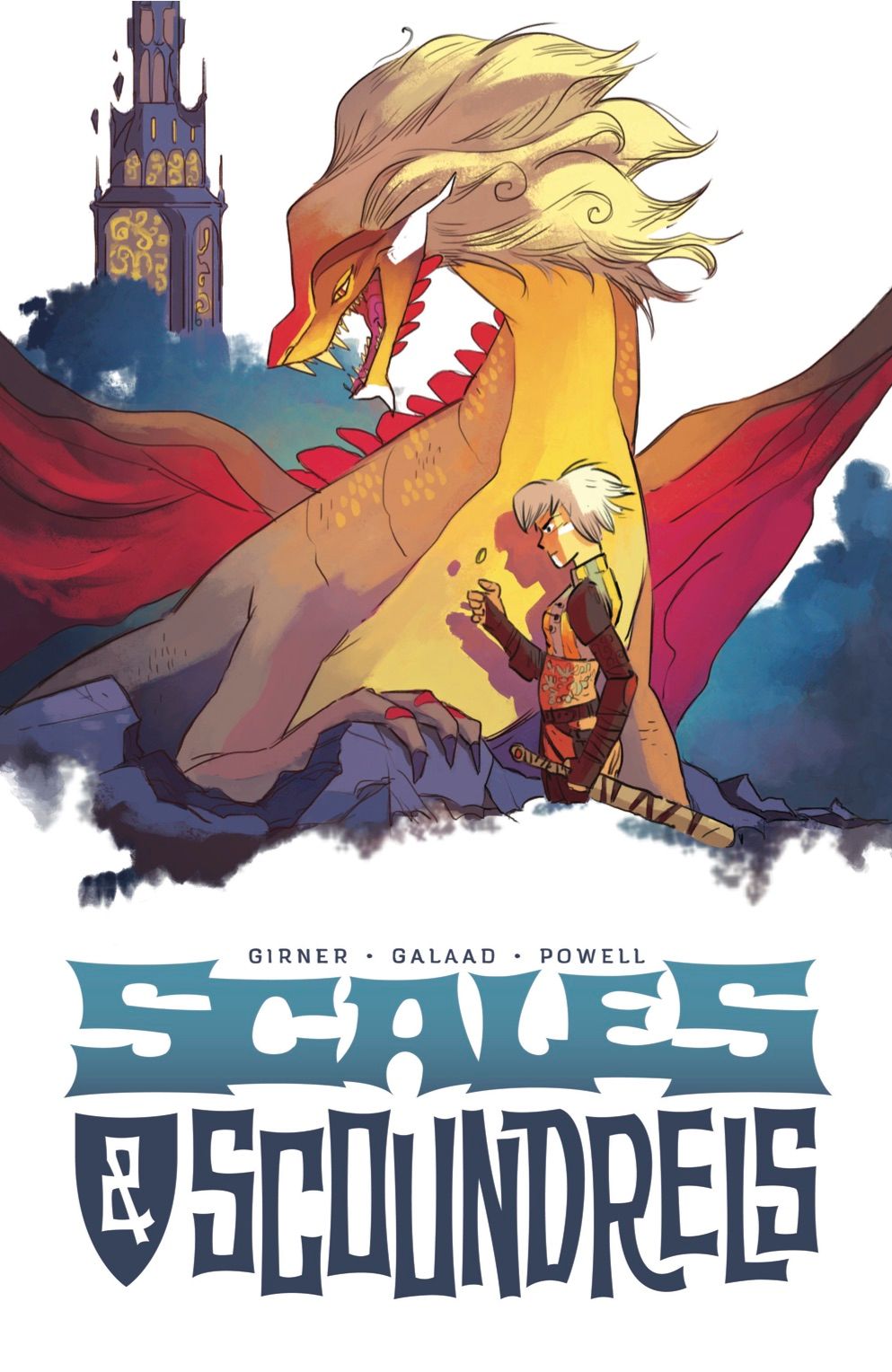Image Comics' September-debuting high fantasy series Scales & Scoundrels is a proudly all-ages affair, but that doesn't mean the protagionist is a one-dimensional do-gooder with strictly altruistic goals. Simply put, Luvander wants to get paid.
The main character is a treasure hunter searching for "the Dragon’s Maw," a dungeon containing untold riches. Of course, getting to it isn't going to be easy, and that's the journey that kicks things off -- with plenty of diversions along the way -- in the story by writer Sebastian Girner (the co-writer of Image's aggressively wacky Shirtless Bear-Fighter, which is in stores this week), French artist Galaad (a newcomer to the American comics scene) and letterer/designer Jeff Powell (Atomic Robo, Renato Jones: The One%).
RELATED: Shirtless Bear-Fighter Creators Want Readers to Ask, ‘WTF is This?’
Much like how Luvander isn't a typical fantasy hero, Scales & Scoundrels aims to be different than your average fantasy story -- the characters speak in dialogue that sounds contemporary rather than Shakespearean, and there's plenty of humor, all through the lens of Galaad's vibrant and expressive visuals. CBR spoke with both Girner and Galaad to hear about how Scales & Scoundrels came together, their own histories as fantasy fans and the long-term plans for the series.
CBR: Sebastian, last time we talked, you mentioned a non-Shirtless Bear-Fighter project that was "quite a ways along." Hey, I think I figured out what that is! What can you share about the development of Scales & Scoundrels? Was it an idea you had percolating for a while?
Sebastian Girner: When it drops in September, S&S will have been in development for just under two years, so it’s something Galaad, Jeff and I have been working away at behind the scenes for some time now.
When Galaad and I started talking about working together, we spent about six months beating a concept into shape and doing first character and world designs. Once we had that in place, it all just sprang to life from the page and developed quite quickly. But we paced ourselves and took the time we felt the work needed before revealing it to the world.
But the upside of that is that we have quite a bit of work done. As we’re typing this, Galaad is wrapping art on #5, so we have the first volume close to done! I’ve never been more excited about the state of a project I’ve been involved with.
Galaad, you're a new name to American comic book readers. How did Scales & Scoundrels develop on your end? What's your approach to visualizing this world?
Galaad: I've been wanting to draw a fantasy comic series for a while now, which is a format we seldom see where I work and live (France). We do traditional 46-page albums and 100+-pages graphic novels, but we don't have that big, sprawling format equivalent of the comic and manga series -- although this has started to change with web publication and popular ongoing series like Lastman.
I think this kind of breadth and scope is quintessential in building a fully fledged world with great character development and interweaving storylines, which is what we all like in fantasy, right?
We want this world to be colorful and filled with wonders and excitement, not some grim and gritty medieval fantasy. Although characters can die in our world, and never come back, it is a place where we would like the readers to feel at home. Wouldn't you want to live in the Shire? I would. This is the homely feeling I tried to capture in the pages.
The main character, Luvander, definitely appears to be the hero of the story but also motivated by somewhat self-interested (albeit practical) means. How did this character form for both of you? What do you see as what makes her unique from other fantasy protagonists?
Galaad: She's not what she looks like at first! Lu is an uplifting character, a rebel at heart, with a complex destiny, not because she's the child of some prophecy or any other nonsense, but because she's a wild card in a changing and evolving world where the powers in charge are unwilling to let go. She's so much fun to draw! I think people will love her. Sebastian gave her a unique and inspiring voice. I've never seen a fantasy character that can go from rowdy silliness to downright thoughtful gravity in a matter of seconds.
Girner: Lu is so much fun to write it’s crazy. And the way Galaad draws her she leaps from the page. At times I feel like I’m just her chronicler, like she’s telling me all these crazy adventures she’s had and I’m just there to write them all down for her.
For me she’s the epitome of the “great mirth and melancholy” line from the famous Conan intro. She has an endless curiosity and desire to seek out new places, people and things. She’s roguish, charming, and rowdy, but underneath there’s a this deep pool of introspection and empathy (though she’d never admit it outright).
I really wanted to write a character readers would want to go on a journey with, someone they’d follow straight into the jaws of hell and back. There’s no adventure too daring for this girl. And like Galaad said, there’s much more to her than meets the eye!
Beyond Lu, what does the cast of Scales & Scoundrels look like?
Girner: By the end of the first issue, readers will have met our core cast, as Lu happens upon another group of adventurers in some dire straights. There is Prince Aki of the Scarlet Sands Empire, who is on a rite of passage (but is also just excited to be traveling the world for the first time).
Then there is Koro, Prince Aki’s Shadow (a royal bodyguard from birth), a stern (and pretty badass) warrior who is very concerned with her personal honor, and not too excited about her prince getting involved with a scoundrel like Lu.
And finally we have Dorma Ironweed, a plucky young dwarf hired by the Prince to guide him through a mystical dungeon (but who has reasons to want to do so all of her own.) Her story is one we are particularly excited to tell.
How do you characterize the tone of the series? Based on #1, there's a lot of humor, and the dialogue feels contemporary -- not the default high fantasy "voice."
Girner: It’s true. I don’t know when it was decided that high fantasy characters all had to sound like community theatre Shakespeare workshops. We want our fantasy to be wide and deep, span generations and untold mysteries, but then not hide all that fun behind a (very often pretty pretentious) layer of sophistication.
It’s like when you learn a language and get to the point where you can just talk to people, rather than read from a textbook. That casual tone of people who occupy the same time and place in a world (fantastical as it may be) is what we’re trying to strike in S&S. I want reader to feel like they are fluent in the languages of this world, to really sink into it and inhabit it, and speak to the characters as they would their own friends and family.
How much are both of you fans of the fantasy genres? What works helped influence this series?
Galaad: I've always been a huge fan of Tolkien, since childhood, although I was never drawn to the epic in his work, but the quieter, more unassuming parts.
That's what deterred me from further fantasy reads for a long time. I could not relate to those knight, warriors and mages that populate modern fantasy and save the world or carve their path to greatness by spilling the blood of their enemies.
I think Tolkien would have been the first surprised to see people take the big, sweeping, epic moments away from his work. As Gandalf said: it is not some great power that holds evil in check, it is the small everyday deeds of ordinary folks. Lu will surely bring more good to the world in her human form than she might ever in her “glorious” form.
Visually, I took inspiration in the works of Florence Magnin and Jean-Luc Masbou, but I cannot deny the influence of Zelda, Final Fantasy and the Mana series on my work, nor can I ignore the more profound influences of Toriyama, Miyazaki and Urasawa.
Girner: Like Galaad, I grew up on Tolkien and loved the sprawling sense of not knowing what’s around that next corner or over that next horizon. That wanderlust, sense of discovery is what draws me to this genre, less the hero vs villain conflicts.
A big part of growing up with fantasy comics, novels and a few films like Legend, Willow and Krull was that I always wanted them to go on past the point where the world was saved and everyone went home. What’s that next adventure?
I was also a big fan of video games like Zelda, Breath of Fire and Chrono Trigger, and there’s a bit of scoundrelness in those as well. Every fantasy hero I’ve ever played has no problem bursting into a villager’s home and smashing all their pots to look for gold and rupees. Pretty rude!
Another notable aspect is that this is billed openly as an all ages series -- how important was that in shaping what you wanted from this book?
Galaad: Comics is a popular medium. Fantasy is a popular genre. I would say this stays consistent with our desire to create a big sprawling world in a format that allows us to make this story resonate with the most people. This doesn't mean characters won't die or experience life-changing, dramatic moment. Quite the contrary. We need to tell these moments on a more fundamental and universal level.
Girner: Absolutely. I know the term “all-ages” tends to be seen as an infantilization or even “dumbing down” of the subject matter, but it’s actually the opposite. It’s a huge (and fun!) challenge to write and draw tense scenes and situations with high stakes but do it in a way where you’re not relying on shock-value to carry the scene.
I would point to Pixar and Studio Ghibli films as inspirations for this kind of universal storytelling, those film are events because they’re not locked off to anyone. That’s the kind of unbarred access we’re looking for with S&S.
Jeff Powell is another major component of this series -- what made his work right for this story?
Galaad: Jeff is an amazingly talented designer and letterer. I don't have a style that blends easily with any kind of graphical elements and he nailed it on the first go. He's the kind of person that's just so good he makes it look easy. His sound FX are always spot on.
Girner: Jeff is a longtime colleague and friend, and I thought of him immediately when Galaad sent in the first pages. I had a sense he might know who to bring to this style of art that would mesh well. Have the lettering sink into the pages and become a part of them, rather than look like it was placed over it.
And his design sense is also just a boon. Galaad had a very clear vision of what S&S should look, feel and read like. To blow away the cobwebs and dust of old fantasy tropes! A lot of that is down to the design of the book, and Jeff is just the right man for that job.
How long of a story is planned for Scales & Scoundrels? Sounds like there's a lot of story to tell.
Girner: We’re strapped in for a full ride. Galaad and I have a working document of story, world and character ideas that could keep us busy for quite some time indeed! We have plans for both large and small stories, multi-issue arcs and smaller, one-off tales.
The characters we meet in just the first issue all have a history, a past and a future and we’d love to take detours and side-paths off the main road of telling the story of Luvander.
So, given the chance we’d love for Scales & Scoundrels to become a true epic. Something readers can count on being there for them for years to come!
Galaad: We’re definitely in for the long haul, if everything goes according to plan! We have so much cool ideas in store for future arcs and so much stories to tell, it’s nearly infinite. Who knows where this adventure will take us?
Scales & Scoundrels #1 is scheduled for release on Sept. 6.

